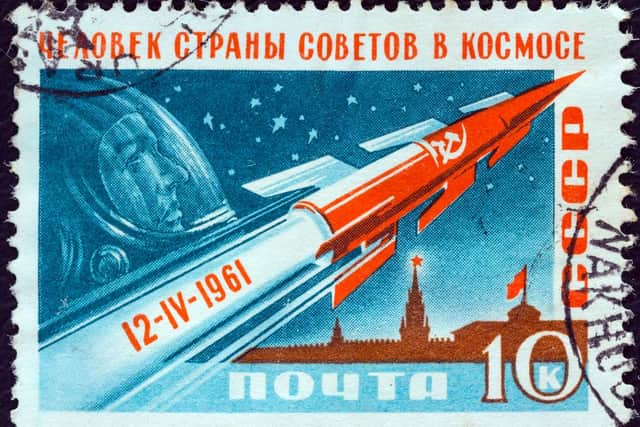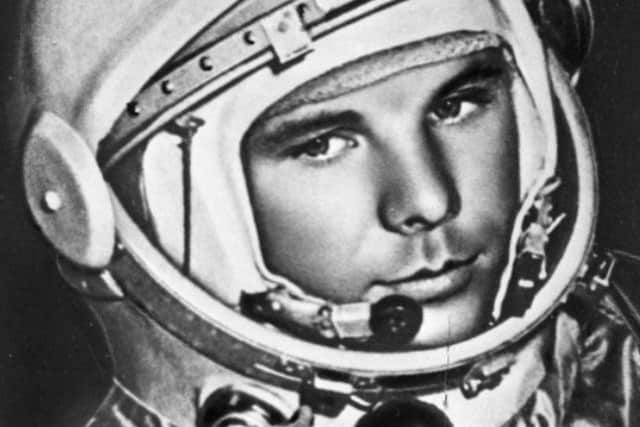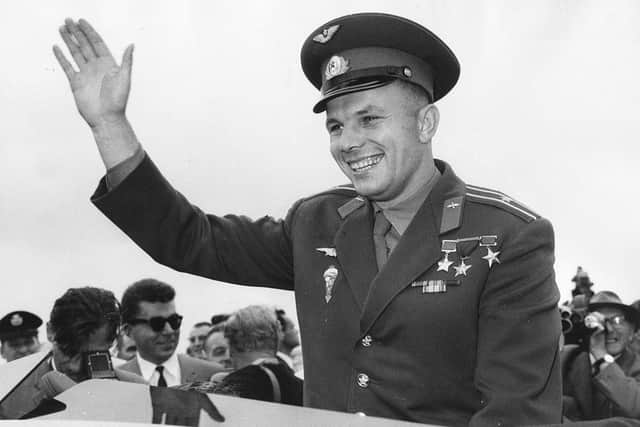Yuri Gagarin: who was the first man in space, when did he go, how did he die - and what was Vostok I mission?
and live on Freeview channel 276
Russians and people all around the globe are commemorating the achievements of Yuri Gagarin, the cosmonaut who became the first person in space 60 years ago.
On 12 April 1961, Gagarin’s Vostok 3KA capsule completed one orbit of Earth and returned safely, catapulting him to international celebrity.
Advertisement
Hide AdAdvertisement
Hide AdHe continues to be internationally recognised as the first human in space, and the first to orbit the Earth.


Here is everything you need to know about him.
Who was Yuri Gagarin?
Gagarin was born in 1934 in the western Russian village of Klushino, roughly 10 miles north of the town of Gzhatsk, itself about 100 miles west of Moscow.


Look for Gzhatsk on a modern day map and you’ll struggle to find it; the town was renamed as ‘Gagarin’ in 1968 in honour of the first manned space flight.
In his youth, Gagarin was a foundryman at a steel plant, but later joined the Soviet Air Forces as a pilot, stationed near the Norwegian border.
Advertisement
Hide AdAdvertisement
Hide AdHe quickly racked up many hours of flight time, which saw him rising through the ranks.
When he expressed an interest in space exploration following the Soviet Union’s launch of Luna 3 – the first-ever mission to photograph the far side of the Moon – his recommendation to the space programme was quickly endorsed.


Gagarin soon found himself interviewed by a medical commission for qualification to the space programme, in particular the Vostok programme, a project to put the first Soviet citizens into low Earth orbit.
What was he like?
Whittled down from a pool of 154 qualified pilots, Gagarin and his fellow potential cosmonauts began training at an airfield in downtown Moscow with a highly physical regimen that has been described as akin to training for the Olympic Games.
Advertisement
Hide AdAdvertisement
Hide AdGagarin was well liked among the others in the group, and when asked to vote anonymously for a candidate besides themselves they would like to be the first to fly to space, all but three chose Gagarin.
A Soviet Air Force doctor described Gagarin’s personality as “modest”, saying he “embarrasses when his humour gets a little too racy”, and “appears that he understands life better than a lot of his friends.”
Gagarin was formally nominated as the primary pilot of the mission on 8 April 1961, and just four days later he was launched from Baikonur Cosmodrome in southern Kazakhstan.
How did the mission go?
Gagarin’s orbit of the Earth took 108 minutes – or just under two hours – and was a great success.
Advertisement
Hide AdAdvertisement
Hide Ad"The feeling of weightlessness was somewhat unfamiliar compared with Earth conditions. Here, you feel as if you were hanging in a horizontal position in straps. You feel as if you are suspended", he wrote in his post-flight report.
During reentry, Gagarin ejected from his capsule at a height of about 7,000 metres and landed using a parachute, though this had always been the plan.
But because of the manner of his descent, officials were concerned that Gagarin’s record would not be certified by the Fédération Aéronautique Internationale (FAI), the world governing body for air sports, which also maintains world records for flights into space.
At the time, the FAI required that the pilot land with the craft for the flight to be deemed a success, and Soviet officials initially refused to admit that Gagarin had not landed with his spacecraft.
Advertisement
Hide AdAdvertisement
Hide AdBut the FAI revised its rules, and Gagarin's spaceflight records were certified and reaffirmed.
What happened next?
Following his spaceflight, Gagarin became an international celebrity and was awarded many medals and titles, including Hero of the Soviet Union, his nation's highest honour.
Wherever he went – including London and Manchester as part of a trip to the UK three months after the mission – he would be greeted by cheering crowds, and Gargarin accepted the invitation of about 30 countries in the years following his flight.
His popularity was so widespread, that then US president John F. Kennedy barred the cosmonaut from visiting the United States.
Advertisement
Hide AdAdvertisement
Hide AdHow did he die?
Gargarin would also not return to space, but not out of choice.
He was permanently banned from further spaceflights when the Soyuz 1 mission, on which he served as a backup crew member, ended in a fatal crash; Soviet officials called time on his space flight career fearing for Gagarin’s life.
Gargarin died in 1968, when the MiG-15 training jet he was piloting with his flight instructor crashed.